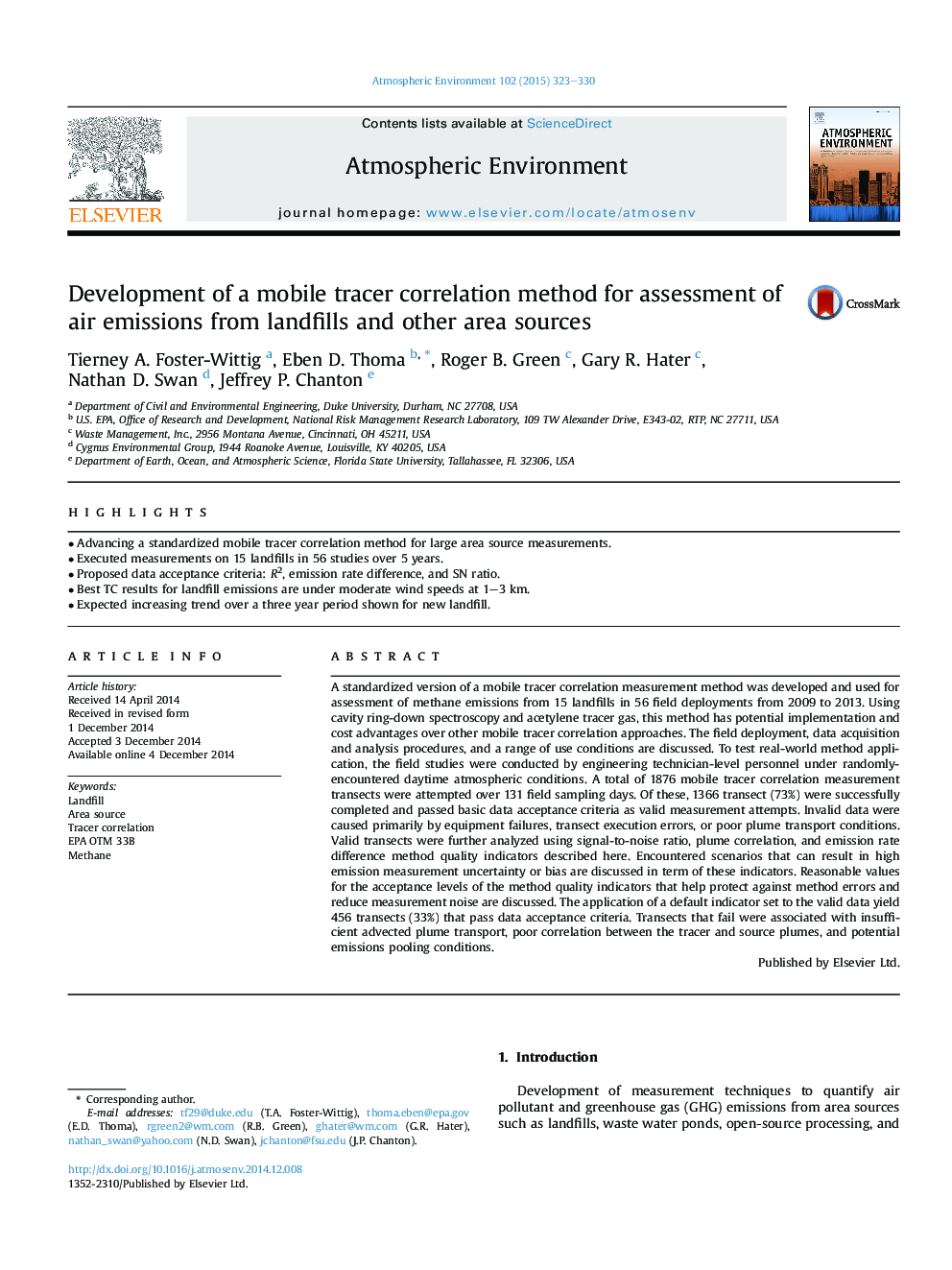| Article ID | Journal | Published Year | Pages | File Type |
|---|---|---|---|---|
| 6338877 | Atmospheric Environment | 2015 | 8 Pages |
Abstract
A standardized version of a mobile tracer correlation measurement method was developed and used for assessment of methane emissions from 15 landfills in 56 field deployments from 2009 to 2013. Using cavity ring-down spectroscopy and acetylene tracer gas, this method has potential implementation and cost advantages over other mobile tracer correlation approaches. The field deployment, data acquisition and analysis procedures, and a range of use conditions are discussed. To test real-world method application, the field studies were conducted by engineering technician-level personnel under randomly-encountered daytime atmospheric conditions. A total of 1876 mobile tracer correlation measurement transects were attempted over 131 field sampling days. Of these, 1366 transect (73%) were successfully completed and passed basic data acceptance criteria as valid measurement attempts. Invalid data were caused primarily by equipment failures, transect execution errors, or poor plume transport conditions. Valid transects were further analyzed using signal-to-noise ratio, plume correlation, and emission rate difference method quality indicators described here. Encountered scenarios that can result in high emission measurement uncertainty or bias are discussed in term of these indicators. Reasonable values for the acceptance levels of the method quality indicators that help protect against method errors and reduce measurement noise are discussed. The application of a default indicator set to the valid data yield 456 transects (33%) that pass data acceptance criteria. Transects that fail were associated with insufficient advected plume transport, poor correlation between the tracer and source plumes, and potential emissions pooling conditions.
Keywords
Related Topics
Physical Sciences and Engineering
Earth and Planetary Sciences
Atmospheric Science
Authors
Tierney A. Foster-Wittig, Eben D. Thoma, Roger B. Green, Gary R. Hater, Nathan D. Swan, Jeffrey P. Chanton,
